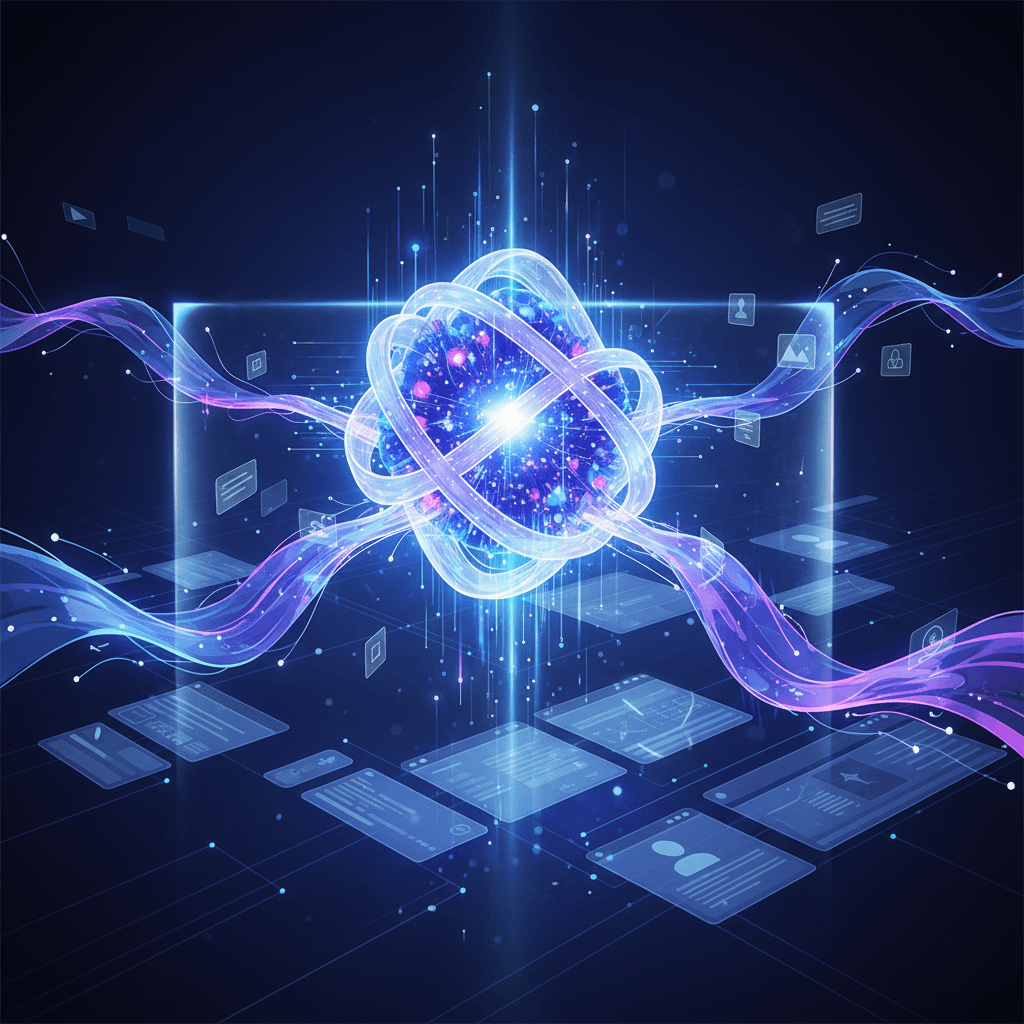Google Unleashes Gemini 3, Challenges Rivals with Breakthrough AI Reasoning and Agents.
Google's Gemini 3 claims AI leadership with breakthrough reasoning, multimodal prowess, and a powerful agent-first development platform.
November 18, 2025

In a significant escalation of the artificial intelligence race, Google has launched Gemini 3, its latest and most powerful AI model, claiming it surpasses leading competitors including OpenAI's GPT-5.1 and Anthropic's Claude Sonnet 4.5 on several key industry benchmarks.[1][2] The announcement signals Google's determined push to reclaim leadership in a fiercely competitive market, emphasizing not just raw performance but also deeper reasoning, multimodal understanding, and more intuitive user interaction.[3][4] Gemini 3 is being rolled out immediately across a wide array of Google products, including Search, the Gemini app, and developer platforms, making its advanced capabilities widely accessible from day one.[5][6] This broad and simultaneous deployment underscores Google's confidence in the new model and its strategy to deeply integrate advanced AI across its entire ecosystem, which currently serves over 650 million monthly users through the Gemini app alone.[5][3] The launch represents a pivotal moment for Google as it seeks to redefine benchmarks and shape public perception in an industry that has been largely dominated by competitors in the mainstream narrative.[7]
At the core of Google's announcement are benchmark results positioning the new Gemini 3 Pro model at the top of the AI hierarchy.[8] The company reports that Gemini 3 Pro achieves a new state-of-the-art score of 1501 on the LMArena leaderboard, a respected platform for evaluating large language models.[9] It also demonstrates what Google calls "PhD-level reasoning" with top scores on difficult exams like Humanity's Last Exam (37.5% without tools) and GPQA Diamond (91.9%).[6][9] In the critical area of mathematics, Gemini 3 Pro reportedly set a new standard on the MathArena Apex benchmark.[2][10] Leaked documents prior to the official announcement showed Gemini 3 Pro outperforming GPT-5.1 on several measures, including scientific knowledge, multilingual question answering, and video understanding.[11] For example, on the GPQA Diamond test for scientific knowledge, Gemini 3 Pro scored 91.9% against GPT-5.1's 88.1%.[11] While it didn't secure a universal victory, notably lagging slightly behind Claude 4.5 on a specific software engineering benchmark, the overall performance data suggests a significant leap in capabilities.[11] Google also introduced a more powerful mode called Gemini 3 Deep Think, which shows even more advanced reasoning, scoring 41% on Humanity's Last Exam and an unprecedented 45.1% on the ARC-AGI-2 reasoning benchmark.[1][6]
Beyond the benchmark wars, Google is emphasizing that Gemini 3 is built to grasp nuance and context more effectively, requiring less prompting from users to deliver insightful and direct responses.[3][9] CEO Sundar Pichai stated that the model is "state-of-the-art in reasoning, built to grasp depth and nuance" and is better at understanding the user's intent.[1][3] This translates into more than just text-based answers; Gemini 3 can generate interactive user interfaces and dynamic visual layouts on the fly.[5][9] For instance, a query about planning a trip might result in a visually rich, magazine-style layout with interactive widgets and options, rather than a simple block of text.[5][9] This focus on a "generative visual user interface" represents a significant evolution in how users might interact with AI, moving from a conversational partner to a tool that actively builds custom experiences.[5] The model's enhanced multimodal capabilities allow it to seamlessly process and synthesize information from text, images, audio, and video, enabling complex tasks like analyzing a sports performance from a video to generate a training plan or translating a handwritten recipe.[1][4][12]
For the developer and enterprise communities, the launch is coupled with the introduction of Google Antigravity, a new "agent-first" development platform.[1][13] Antigravity is designed to allow developers to create and manage autonomous agents that can perform complex, multi-step tasks across different applications like the code editor, terminal, and browser.[5][3] The platform aims to let developers operate at a higher, more task-oriented level, where an agent can take a single prompt and independently build an application, create subtasks, and execute them.[5][13] This move toward more autonomous "agentic" AI is a key theme of the Gemini 3 launch, with features like the new Gemini Agent in the consumer app capable of managing tasks like organizing an email inbox.[5][14] The Antigravity platform will be available in a public preview for Mac, Windows, and Linux and will notably support not only Gemini 3 but also models from competitors like Anthropic's Claude Sonnet 4.5 and OpenAI's open-weight models, fostering a more open ecosystem.[13] This strategy, combined with Gemini 3's improved coding abilities showcased by its top ranking on the WebDev Arena leaderboard, signals a concerted effort to win over the crucial developer market.[6][3]
In conclusion, the launch of Gemini 3 and the Antigravity platform marks an aggressive and multifaceted offensive from Google in the ongoing AI arms race. By claiming top-tier performance on critical benchmarks, Google directly challenges the dominance of OpenAI and other key players.[2][15] The immediate and widespread integration of Gemini 3 across its vast product landscape ensures that these new capabilities are not just theoretical but are instantly available to hundreds of millions of users.[5][6] The focus on improved reasoning, nuanced understanding, and dynamic, multimodal outputs points to a future where AI interaction is more intuitive and powerful.[5][4] Furthermore, the introduction of an agent-focused development platform like Antigravity highlights the industry's shift towards more autonomous systems that can execute complex workflows.[16][17] The coming weeks and months will be critical as the industry independently verifies the performance claims and developers begin to explore the potential of these new tools, potentially reshaping the competitive dynamics of the AI industry once again.[7]
Sources
[6]
[7]
[8]
[10]
[11]
[12]
[13]
[14]
[15]
[16]
[17]